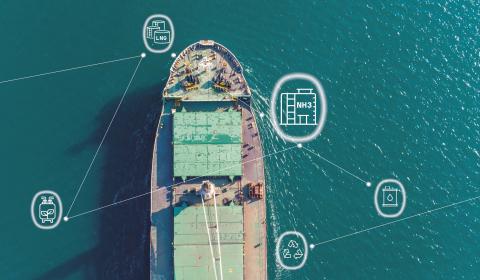
New International Standard for bollard pull trials to ensure safety for anchor handling vessels
As projects increasingly reach commercialization, floating offshore windfarm (FOWF) development promises a world of opportunities for the existing anchor handling fleet. Anchor handling vessels are particularly set to benefit from this new business path, as they could be used to install mooring lines and anchors, tow floating structures and help with the installation of cables.
A critical consideration from a safety and contractual perspective
Bollard pull (BP) measurement is a simple but vital assessment for anchor handling vessels. There are two aspects that particularly call for precise BP measurements. The first is safety, as an overestimated BP value can give rise to serious accidents when the vessel is in operation. The second is contractual, as a vessel’s BP value is a key consideration for FOWF developers when chartering vessels to work on their project.
Cross-industry collaboration to improve accuracy and safety
Although BP can be estimated on paper, the only way to achieve true accuracy is through direct measurements from physical trials. To improve BP testing, Bureau Veritas joined 31 key stakeholders, including shipowners, designers, shipyards and engine manufacturers, in a JIP to create a new standard. Over the course of three years, the group worked on the new standard with the aim of:
- Avoiding ambiguous definitions
- Harmonizing testing procedures
- Facilitating a realistic and replicable testing performance
In achieving these objectives, the new standard addresses the main factors that can influence the BP value, including:
- Load cell torsion, alignment or calibration
- Trial conditions (e.g., depth, line length)
- Environmental conditions (e.g., wind direction, current direction, water density)
It affirms appropriate trial procedures for both preparation and execution to ensure the tests are standardized and fair. It also considers new power generation technologies such as fuel cells or electric hybrid systems. By standardizing the BP testing process, we can improve trust and transparency between charterers and operators and, above all, protect crews.
The new standard has been implemented in our rules and reflected in our new additional service feature Standardized design bollard pull. It is assigned to vessels that have applied this new standard during their BP test.
By your side for the next stage of floating wind
The growth of floating offshore wind is cause for optimism for anchor handling vessel owners. This could mean more contract opportunities for them as the oil and gas industry moves into a new phase. However, in order to make the leap into serving the renewable energy industry, owners may have to retrofit and upgrade their vessels to meet sustainability standards.
Batteries or alternative fuels would both be options to reduce the anchor handling vessel’s emissions. However, few are currently employing these methods, and owners will have to carefully consider their best option. With extensive knowledge of OSVs, alternative fuels, electrification and the offshore wind industry, BV Marine & Offshore is ready to support owners as they prepare for the future.










